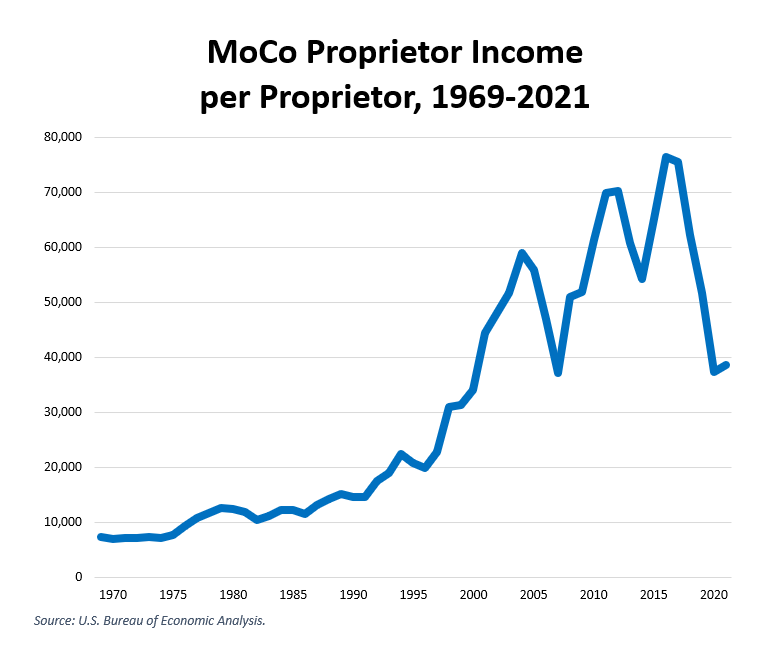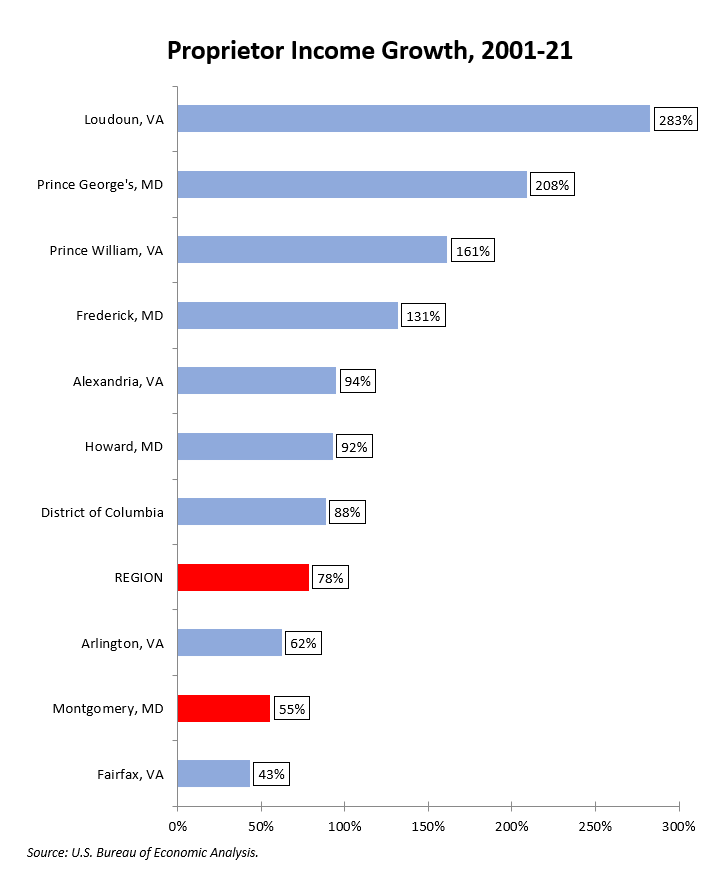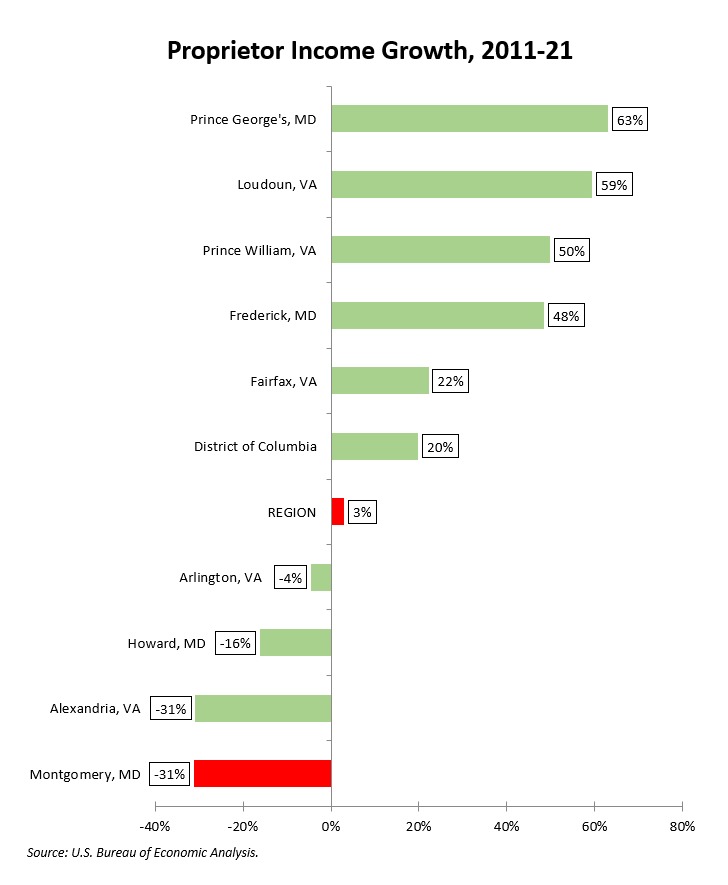By Adam Pagnucco.
Here is a huge part of our economy that is largely untracked by the U.S. Bureau of Labor Statistics: proprietors. This is how the U.S. Bureau of Economic Analysis, which does track them, defines proprietor income.
Current-production income of sole proprietorships, partnerships, and tax-exempt cooperatives. Excludes dividends, monetary interest received by nonfinancial business, and rental income received by persons not primarily engaged in the real estate business.
MoCo had 215,078 proprietor jobs in 2021. That’s number one in the region, exceeding Fairfax (210,119), Prince George’s (152,474) and D.C. (114,987). That makes self-employed people and the money they earn extremely important to us even though they don’t show up in traditional wage and salary employment statistics. How have they been doing?
The chart below shows proprietors income (red line, left axis) and proprietor employment (green line, right axis) from 1969 through 2021. Unlike wage and salary employment, proprietor employment has seen substantial growth over the last twenty years. So did proprietor income – that is, until 2016.

For some reason, 2016 was a turning point in incomes earned by MoCo proprietors. In that year, the average income per proprietor was $76,336. Since then, it has fallen to under $40,000. The pandemic saw some of this drop, but it started before COVID hit. The data does not allow me to parse why this happened, but it does make me wonder if the mix of proprietors in the county has been changing. It’s hard to believe that the exact same group of people saw this much income decline in just five years. I also wonder if a small number of wealthy proprietors had a disproportionate effect on this drop.

Now let’s compare our growth in proprietor income to the rest of the region over the last 20 years. Despite our growth in jobs, we have not been a leader in income growth.

Over the last decade, we trailed the other big players in the region in proprietor income growth.

Finally, the chart below shows what has happened to proprietor income since 2016, our peak year on that measure.

We are a huge outlier on this measure and the data does not explain why. Are lower earning people unusually unable to find wage and salary jobs here and disproportionately turning to self-employment? Are our small businesses struggling more than others in the region? The data does not allow those hypotheses to be tested. But because proprietors are so numerous here compared to our wage and salary workforce, these trends are worrisome.
We conclude in the next post.
